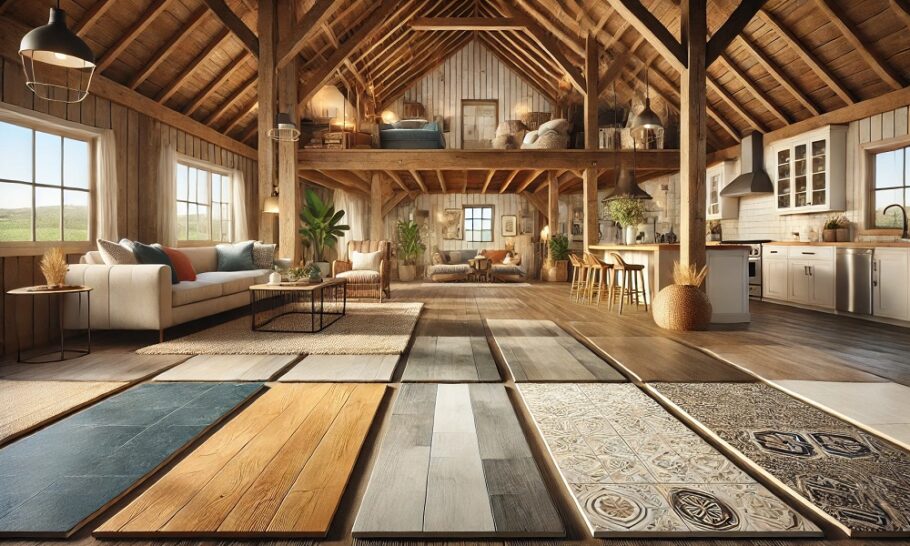Barndominiums have exploded in popularity over the last decade, praised for their affordability, versatility, and rustic charm. Many homeowners opt for hybrid structures—combining the strength of steel with the warmth and beauty of wood—to achieve the perfect balance of durability and aesthetics. But with that blend comes a very real concern: termites.
Termites are notoriously destructive, capable of causing thousands of dollars in damage before a homeowner even realizes they’re there. For hybrid barndominiums, where wood is a key component, protecting against termites requires a smart, layered approach. Fortunately, it’s absolutely possible to build a termite-resistant (even termite-proof!) barndominium with the right strategies.
Here’s the inside scoop on how to do it right.
Understand the Enemy: Why Termites Love Wood
Termites are drawn to wood because it’s their primary food source. They consume cellulose, an organic fiber found in wood and other plant materials. In barndominiums, even treated wood can be vulnerable over time if moisture, poor design, or neglect create the right conditions.
There are two main types of termites to worry about:
- Subterranean termites: These pests live in the soil and build mud tunnels to access wood above ground.
- Drywood termites: These termites don’t need soil contact and can infest dry wood directly, making them especially problematic for walls, roofs, and furniture.
The hybrid nature of a barndominium—metal framing with wooden interiors or accents—means homeowners need to be extra vigilant. Steel components don’t attract termites, but wood paneling, trims, support beams, and even furniture can.
Step 1: Choose Termite-Resistant Materials from the Start
If you’re still in the planning or early construction phase, material choice is your best line of defense.
- Pressure-Treated Wood: Wood that’s been infused with preservatives to resist termites and rot. Always verify that your materials are rated for ground contact if used in vulnerable areas.
- Naturally Resistant Woods: Some woods are less appetizing to termites, such as cedar, redwood, teak, and cypress. Though pricier, they can be worth the investment, especially for exposed areas like patios or interior beams.
- Steel Over Wood: Whenever possible, choose steel structural components instead of wood, particularly for load-bearing elements. Wood is mainly used for decorative features, keeping it off the ground.
Pro Tip: Even treated or naturally resistant woods can become vulnerable if they stay moist over time, so combining smart materials with good design is crucial.
Step 2: Build with a Termite-Smart Foundation
Subterranean termites can infiltrate from the ground, so attention to your foundation design is critical.
- Concrete Slab Foundation: A properly poured concrete slab can create a strong barrier. Incorporate a termite shield or vapor barrier underneath the slab to add extra protection.
- Metal Termite Shields: Install metal flashing between the foundation and the wooden parts of your structure. Termite shields don’t kill termites but force them to build visible mud tubes, making infestations easier to spot early.
- Proper Grading: Ensure that the ground slopes away from the building to prevent water pooling around the foundation—moisture is termite bait.
Step 3: Eliminate Moisture Problems
Moisture control is a huge part of termite prevention. Termites are attracted to damp environments because it makes wood easier to chew.
- Gutters and Downspouts: Direct rainwater away from your barndominium with properly maintained gutters.
- Ventilation: Make sure crawl spaces, attics, and interior walls are well-ventilated. Installing vapor barriers in crawl spaces is a smart move.
- Seal Leaks Immediately: Plumbing leaks inside walls or under sinks can create a hidden termite buffet. Stay on top of repairs.
In hybrid barndominiums, pay special attention to how wood components interact with steel framing. Condensation can form where cool metal meets warmer air, so proper insulation and vapor barriers are essential.
Step 4: Treat the Structure Preemptively
Even if you’ve chosen smart materials and designed your foundation carefully, chemical protection provides another vital line of defense.
- Soil Treatments: Before construction, applying termiticide to the soil can create a lethal barrier.
- Boron Treatments: Borate-based wood treatments are non-toxic to humans but deadly to termites. They soak into the wood and remain effective for years.
- Professional Sprays: Hiring a pest control company to treat exposed wood during construction can save a lot of heartache later.
Today’s termiticides are often non-repellent, meaning termites can’t detect them. They unknowingly walk through treated zones and carry the poison back to their colony.
Step 5: Design Features That Deter Termites
A termite-proof barndominium isn’t just about materials and chemicals—design matters too.
- Keep Wood Elevated: Avoid having wood in direct contact with the soil. Porch posts, siding, and stairs should sit on concrete or metal bases.
- Minimize Wood-to-Ground Contact: Where wood is unavoidable near the ground, make sure it’s pressure-treated and regularly inspected.
- Accessible Inspection Zones: Design your home so that termite inspection areas are visible and accessible. Don’t bury wood behind permanent walls or under concrete patios without access points.
Step 6: Maintain Vigilance Over Time
Your efforts don’t end once construction is complete. Regular maintenance is the key to a termite-free future.
- Annual Inspections: Schedule professional termite inspections annually, even if you see no signs of trouble.
- Keep Wood Debris Away: Store firewood, lumber, and mulch away from the structure.
- Watch for Warning Signs: Mud tubes on walls, hollow-sounding wood, discarded wings, or small piles of frass (termite droppings) can signal trouble.
- Stay Dry: Keep an eye on your roof, siding, and plumbing to quickly fix leaks.
The great thing about barndominiums is that their open design and steel framing often make termite detection easier than in traditional wood homes.
Final Thoughts: Build Smart, Live Easy
A hybrid wood/metal barndominium doesn’t have to be a termite magnet. With smart planning, careful material selection, moisture control, chemical treatments, and regular maintenance, you can enjoy all the charm of a wood-accented home without the worry.
The secret isn’t just one thing—it’s a combination of strategies, layered together to create a fortress against pests.
Protect your investment, sleep easy, and enjoy the rugged, beautiful lifestyle that only a barndominium can offer.

